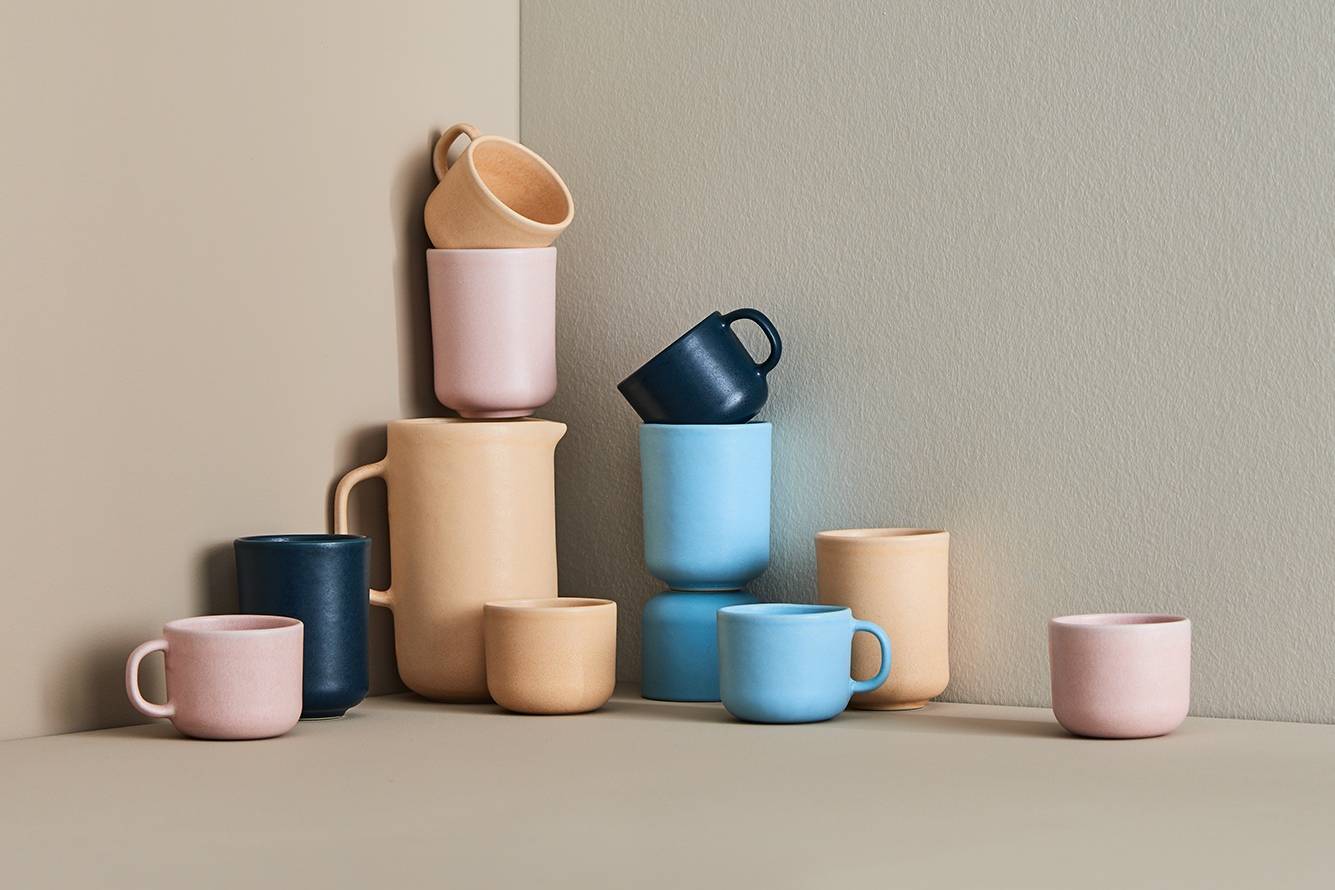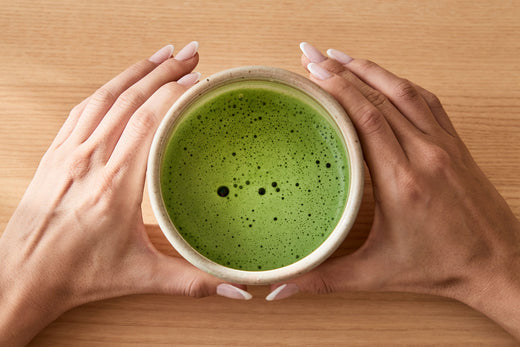It’s a drink that accompanies us every day and enriches our lives: tea. Incredibly versatile, it tells of fascinating cultures and traditions. We want to take a closer look at green tea, which enjoys great popularity worldwide. It is considered an elixir of life in countries like China and Japan. How is it made? How do you prepare it correctly? Join us on an aromatic journey as we explore the preparation tips, varieties, and history of green tea.
The Origin of Green Tea
When people in China and Japan talk about tea, they are most likely referring to green tea. It is considered the origin of all teas and is an integral part of daily life in East Asia. The history of tea cultivation in China dates back over 5,000 years. The first tea was reportedly planted in the Yunnan region of southern China. Buddhist monks then brought the tea to Japan. Since then, Japan has dedicated itself entirely to the production of green tea. The Zen Buddhists in Japan believe that a cup of tea contains one's entire life and drink green tea before their meditation. While the Chinese tea ceremony often features Oolong or Pu-Erh tea, in Japanese ceremonies, green tea is essential, especially Matcha.
Developed in Kyoto, this ritual is still practiced according to the same traditions even centuries later. Tea farms now exist worldwide, where traditional production methods are continued, and new fascinating varieties are developed. Besides the leading production countries China and Japan, you can also discover green teas from growing regions like Nepal, South Korea, or Sri Lanka.

Processing Green Tea: When Leaves Become Delight
Green tea, like all six tea varieties, is derived from the leaves of the tea plant Camellia Sinensis. Typically, there are 3 to 5 harvests per year on tea plantations. The most sought-after harvest is the very first of the year when only the topmost, most tender buds are picked. This tea is of particularly high quality and is called "First Flush". Each year, tea enthusiasts eagerly await this first harvest. Whether a picked tea leaf turns into white, green, or black tea depends solely on the steps taken in its further processing that will produce the different varieties. Thus, a delicious variety for our cup is created.
From Tea Tree to Our Caddies
No time should be wasted after the harvest because oxidation of the tea leaves begins immediately after picking. Oxidation is the natural reaction of tea leaves with the oxygen in their environment. At the production facility, the tea leaves undergo heat treatment to stop oxidation. There are two main processes: the Japanese method, which involves steaming the tea leaves with hot steam, and the Chinese tradition, which involves roasting the leaves with dry heat in a kind of wok. Steamed teas in the Japanese tradition retain their typically sweet umami taste. Roasted teas in the Chinese style develop unique roasted aromas. The processing method can also be identified by the leaves' appearance: steaming retains their fresh green color, while roasted green teas develop a slight brown tint.

Craft Behind Perfection: Traditional and Modern Processing
Tea harvesting is a finely tuned microcosm. Every step has its place in the process. Through precision, much intuition, and experience, top-quality teas are created. Nowadays, some steps are performed by machines to ease the workers' load. Besides modernization, traditions have also proven their worth and continue to this day. Japanese tea fields on the slopes of active volcanoes have been covered with shade nets for centuries to protect the plants from falling ash. Like natural fog which reduces sunlight exposure, shading causes a sweet taste in the tea leaves, which is now typical for Japanese tea. Many tea farms far from volcanoes now use nets to give their teas this umami flavor. For the varieties Gyokuro and Tencha, usually used for Matcha, this traditional shading technique is essential as it creates their unique flavor profiles.

Naturally, mechanical harvesting allows for a larger quantity of tea to be harvested in a shorter time. The competition in the tea business is big, and larger factories cope better with this pressure. Smaller tea plantations often specialize in rarities that can only be hand-picked in small quantities. You can taste the difference: only the most valuable part of the branch, the topmost tea leaves and buds are thumb-picked for quality teas. Especially in Japan, the further processing of tea has seen significant modernization over the last hundred years: what was once done by hand is now handled by machines, meticulously adjusted and overseen by tea farmers. The steaming and traditional rolling of tea leaves are often done by machines, significantly increasing production.
The Play of Aromas: Different Varieties of Green Tea
No other tea type is as diverse as green tea. Green tea has the largest tea family, offering an aromatic selection with countless varieties for tea enthusiasts. No two green teas are alike. Here we introduce you to some of the most important green tea varieties.
Sencha, Gyokuro & Co.: A Composition of Taste & Character
Sencha is the quintessential Japanese green tea, a popular everyday tea. Sencha means “steamed tea.” This variety is briefly steamed (no longer than a minute), then rolled into fine needles and dried. Sencha captivates with its juicy green flavor profile.
Have you heard of Gyokuro? This Japanese tea has a highly esteemed reputation as it is a particularly valuable shade-grown tea. The buds are harvested only once a year, during the first harvest known as Ichiban (First Flush). The tea leaves are shaded three weeks before harvesting, then steamed and dried, giving Gyokuro its distinctive umami flavor.
In China, one of the most famous teas is the legendary Longjing like IMPERIAL DRAGON N°302. Tea leaves are roasted in woks and pressed against the wok. This process creates its characteristic flat leaf shape. The “Dragon Well Tea” with its slight sweetness and fine nutty aromas owes its name to a legend. According to the legend, tea plants wound around a well, where a dragon lived that brought good fortune to people. It is a true green tea specialty that even captivated the emperor during the Qing dynasty.
Unique Green Tea Varieties: Hidden Treasures
- Our Genmaicha GRAIN OF TRUTH N°314 is a Japanese Sencha with roasted rice. Originally a nutritious drink for poor people, Genmaicha, with its added roasted rice, is now a highly appreciated green tea blend that tastes like fresh popcorn.
- Matcha is traditionally the drink of tea ceremonies and was once a rare commodity, but it has now taken the Western world by storm. It is made from Tencha, tea leaves that are shaded for up to 5 weeks before harvest. Unlike Gyokuro, another shaded tea, Matcha is a ground powder that is consumed entirely. This results in an especially intense flavor.
-
Hojicha is roasted green tea. For this type of tea, a Sencha or Bancha is steamed in the Japanese style and then roasted. Hojicha is popular for its irresistibly nutty roasted aroma. Try DAILY TOAST N°318. When ground, HOJICHA POWDER N°331 is a good alternative to Matcha.

The Perfect Moment: The Art of Brewing
Many don’t know that green tea should never be brewed with boiling water, as this "burns" the delicate flavors, making them lose their aroma. If the tea leaves steep for too long, the tea becomes bitter. With the right preparation, green tea can unfold its full flavors. Perhaps you’ve seen in an authentic brewing how the tea leaves are brewed in a pot and then poured directly into a second serving pot. Let’s take a closer look at the proper tea preparation.
The Secret of the Perfect Brew
To unlock the full flavor of your green tea, it’s crucial to pay attention to water temperature and steeping time. A short steeping time of 1-2 minutes is sufficient. Additionally, the delicate aromas of green tea are best released at temperatures of 60-80°C. Too hot water releases the bitter substances in green tea and releases them in the water. Your favorite tea deserves the right preparation. You’ll find a precise recommendation on each PAPER & TEA package and online on the product page. This way, you get the best result from the precious tea leaves.
Preparation: The Right Tools
There are fascinatingly many accessories for tea preparation. Ceramics from Asia not only look beautiful but also serve their purpose: traditional teapots from China and Japan are generally smaller than Western teapots. The reason is that multiple infusions of tea are much more common in Asian cultures than in Europe. In Japan, the traditional Kyusu with a side handle is popular. The built-in strainer ensures that the tea leaves stay in the pot. In China, the Gaiwan, a tea bowl with a lid, is popular. Experimenting with infusions is a true game of nuances: different aromas unfold during the second and third infusions more than during the first. You can also opt for a glass pot like our Cylinder Pot Large, which is very easy to maintain and suitable for any tea.
Additionally, the transparent material lets you see the beautiful dance of the tea leaves.

Famous Growing Regions: Your Journey Continues
Do you want to know where your favorite tea comes from and learn more fascinating facts about tea? At our PAPER & TEA tastings, you can meet like-minded individuals and gain exciting tea knowledge. Immerse yourself in the world of tea. Or go beyond national borders and visit the most important tea-growing regions. Here, we provide an overview of the key places to visit. Once the love for tea is kindled, there is so much more to discover.
On the Trails of Tea: Travel Destinations for Tea Enthusiasts
70% of Japanese tea is produced at the foot of the world-famous Mount Fuji. The Shizuoka Prefecture is known for its particularly long-steamed tea, such as our HANAMI FLUSH N°902. The oldest growing region Uji is located on the main Japanese island Honshu near Kyoto. On the island of Kyushu, with the city of Kagoshima, there are still active volcanoes today. Their ash provides nutrient-rich soils that favor tea cultivation. Try our Everyday Matcha and Genmaicha GRAIN OF TRUTH N°314, both from Kagoshima.
Tea production in China takes place in the south. The original region of Chinese tea is in Yunnan Province, also known as the birthplace of tea. Further east is the Fujian region, famous for its jasmine flower tea, such as our IN THE MOOD FOR LOVE N°323. Another traditional region is Zhejiang, where the legendary Longjing IMPERIAL DRAGON N°302 originates. However, there are numerous other interesting tea places outside of China and Japan. From Hile in Nepal’s Himalayan slopes comes our PALACE OF PATAN N°322, and for MAIA’S PICK N°316, we traveled to South Korea. Has the travel fever caught you yet?
Courses & Seminars for Tea Enthusiasts
Sometimes happiness is very close: in one of our PAPER & TEA Stores near you, we regularly offer seminars and tastings to dive into the fascinating world of tea together with you. In our introduction, we give you exciting insights into tea culture. You can witness tea preparation up close and explore the diverse flavor profiles of tea. On this quick journey to other worlds, our experts can’t wait to share their tea knowledge with you and offer you an unforgettable tasting experience. And perhaps you’ll find your new favorite tea as well.























